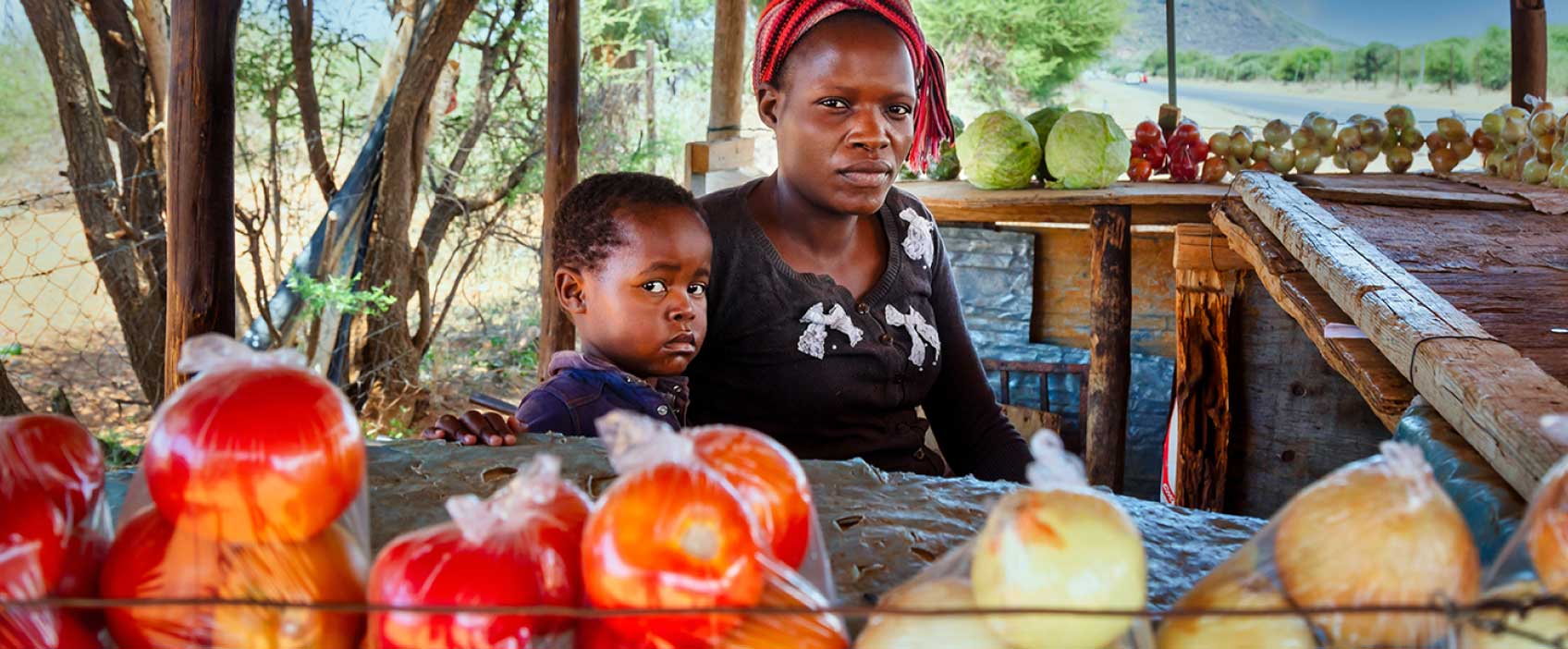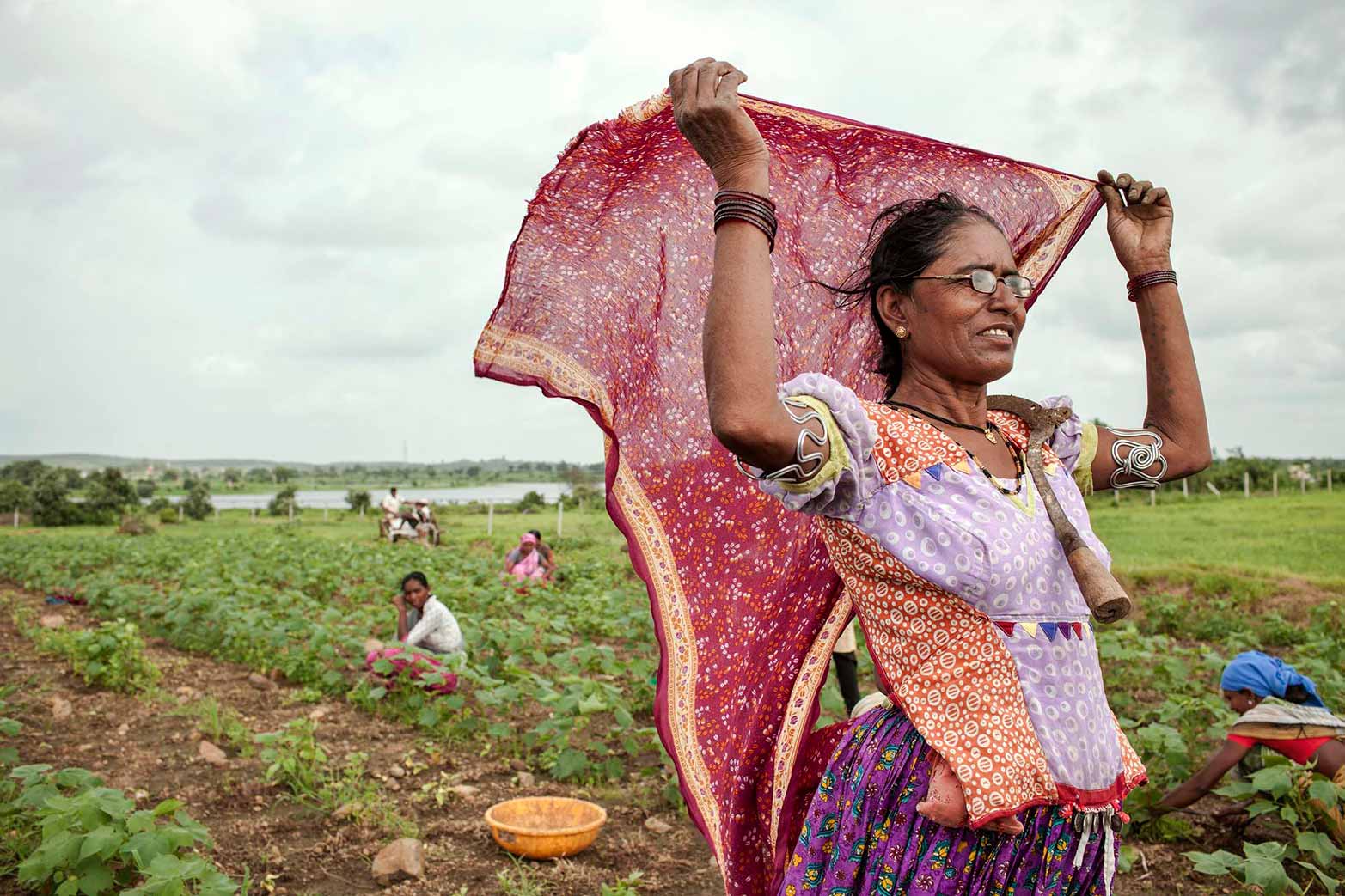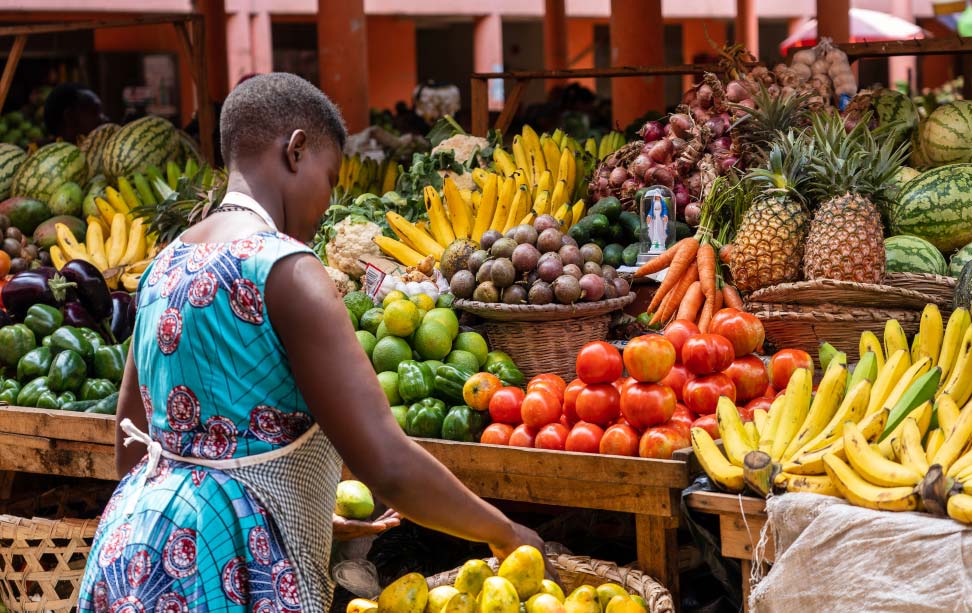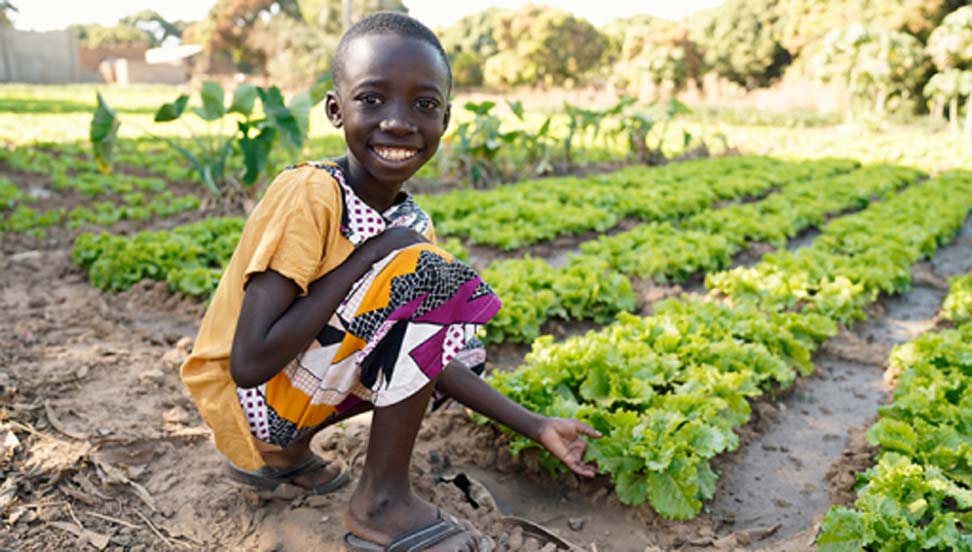
Publications and Datasets
IFPRI publications provide evidence-based insights and analysis on critical issues related to policies for food systems, food security, agriculture, diets and nutrition, poverty, and sustainability, helping to inform effective policies and strategies. Materials published by IFPRI are released under a Creative Commons license, and are available for download. IFPRI authors also publish in external sources, such as academic journals and books. Where possible we provide a download link for the full text of these publications.
Featured Publications
Journal Article
Sustainable poverty reduction through social assistance: Modality, context, and complementary programming in Bangladesh
2025Ahmed, Akhter; Hidrobo, Melissa; Hoddinott, John; Kolt, Bastien; Roy, Shalini; Tauseef, SalauddinJournal Article
Adapting the women’s empowerment in nutrition index: Lessons from Kenya
2025Lentz, Erin; Jensen, Nathan; Lepariyo, Watson; Narayanan, Sudha; Bageant, ElizabethJournal Article
Conflicts, crop choice, and agricultural investments: Empirical evidence from Nigeria
2025Amare, Mulubrhan; Abay, Kibrom A.; Berhane, Guush; Andam, Kwaw S.; Adeyanju, DolapoExplore Our Latest Publications
By Title By Author By Country/Region By Keyword
Journal Article
Front-of-pack labels and young consumers: An experimental investigation of nutrition and sustainability claims in Chile
Journal Article
Rural institutions and the technical efficiency of teff production in Ethiopia
Journal Article
Storage management practices and mycotoxin contamination of sorghum (Sorghum bicolor) in northwest Ethiopia
Journal Article
Fertilizer and conflicts: Evidence from Myanmar
Journal Article
Global shocks to fertilizer markets: Impacts on prices, demand and farm profitability
Journal Article
Fertilizer demand and profitability amid global fuel-food-fertilizer crisis: Evidence from Ethiopia
Journal Article
Maize yield responsiveness and profitability of fertilizer: New survey evidence from six African countries
Journal Article
Estimating the direct and indirect effects of improved seed adoption on yields: Evidence from DNA-fingerprinting, crop cuts, and self-reporting in Ethiopia
Journal Article
Adapting the women’s empowerment in nutrition index: Lessons from Kenya
Journal Article
Adapting the Women’s Empowerment in Nutrition Index: Lessons from Kenya
Journal Article
Armed conflict and gendered participation in agrifood systems: Survey evidence from 29 African countries
Journal Article
Building Ethiopia’s food security resilience to climate and hydrological change
Journal Article
Seed certification, certified seeds use and yield outcomes in Nigeria: Insights from nationally-representative farm panel data and seed company location data
…more
Abdoulaye, Tahirou; Kumar, P. Lava; Wossen, TesfamichealWorking Paper
Unique datasets on shocks, food security, and household coping strategies: Creating new analytical playgrounds to study coping behavior in the multi-shock environments of Mali, Chad, Niger, and Burkina Faso (2018-2023)
Report
IFPRI Malawi monthly maize market report, January 2025
Report
The cluster panacea? An evaluation of three interventions in shrimp value chains in Bangladesh
Preprint
Can district level support enhance coverage and equity? Evidence from India’s nutrition program
…more
Chakrabarti, SumanJournal Article
How helpful are the “hidden costs of food systems” numbers?
Journal Article
The long-run and intergenerational impact of early exposure to the Great Chinese Famine of 1959–61 on mental health
Brief
Madagascar assessment
Brief
Methodology [of the PEDAL project]
Brief
Conditional contracts in indirect local procurement of maize from smallholder farmers in Uganda: A study design to assess impacts
Journal Article
The effects of prenatal multiple micronutrient supplementation and small-quantity lipid-based nutrient supplementation on small vulnerable newborn types in low-income and middle-income countries: A meta-analysis of individual participant data
…more
Ashorn, Ulla; Mridha, Malay Kanti; Arifeen, Shams; Bhutta, Zulfiqar A.; Cheng, Yue; Christian, Parul; Costello, Anthony M.; Dewey, Kathryn G.; Friis, Henrik; Gomo, Exnevia; Grais, Rebecca; Guindo, Ousmane; Krebs, Nancy F.; Huybregts, Lieven; Isanaka, Sheila; Lachat, Carl; Lartey, Anna; LeClerq, Steven C.; Maleta, Kenneth; Manandhar, Dharma S.; Martorell, Reynaldo; Matias, Susana L.; McClure, Elizabeth M.; Moore, Sophie E.; Osrin, David; Urassa, Willy; Pembe, Andrea B.; Prentice, Andrew M.; Ramakrishnan, Usha; Rivera, Juan; Rizvi, Arjumand; Roberfroid, Dominique; Shamim, Abu Ahmed; Soofi, Sajid; Schulze, Kerry; West Jr., Keith P.; Wu, Lee; Zeng, Lingxia; Zhu, ZhonghaiWorking Paper
Household coping strategies and food security in the multi-shock environment of Mali
Brief
Papua New Guinea food price bulletin: January 2025
Working Paper
Integrated agro-industrial parks in Ethiopia: Status, success and challenges with a focus on Yirgalem IAIP
Report
Synthesis report: Agricultural transformation and market integration in the ASEAN region: Responding to food security and inclusiveness concerns
Report
Completion report: Agricultural transformation and market integration in the ASEAN region: Responding to food security and inclusiveness concerns
Working Paper
Agrifood value chains in India: A state-level analysis using a social accounting matrix
Infographic
Child growth and development in rural Papua New Guinea
Working Paper
Stakeholder disconnect: Differences between farmers, extension workers, and researchers on preferred strategies for timely wheat sowing in Bihar, India
Brief
The case for food system knowledge support system (FS-KSS)
Brief
The case for post Malabo Agenda implementation guidelines
Brief
Comprehensive mapping of food systems is necessary to guide transformation efforts: The case of Rwanda
Report
Farmers brace for a new round of trade wars
Brochure
IFPRI’s approach to research
Preprint
Can rights-based conditional cash transfers improve children’s nutrition at scale? Evidence from India’s maternity benefit program
Preprint
Perceived constraints to healthy diets: Evidence from agrifood system assessments in rural South Asia
Preprint
Intrahousehold dynamics in South Asia: Understanding the relationships between women’s empowerment, task sharing, decision making, and diets among women
Report
IFPRI Malawi monthly maize market report, December 2024
Brief
Use of fertilizers in agriculture sector of Tajikistan
Brief
Agricultural advisory services in Tajikistan: Private sector role
Working Paper
Rural diets under pressure: Food environments and their influence on food choice in South Asia
Brief
Agrifood trade in Tajikistan
Preprint
Assessing food acquisition, preparation, and consumption practices in South Asia: A systematic review of assessment tools
Working Paper
The political economy of food self sufficiency policies and food security in African countries
Preprint
What adults in rural South Asia eat and when they eat it: Evidence from Bangladesh, India, and Nepal
Brief
Agriculture sector reform and sectoral programs in Tajikistan
Journal Article
Does rural non-farm employment relieve or exacerbate the agricultural diversification-farm efficiency tradeoff: The case of aquaculture in Bangladesh
Journal Article
Do youth work in agriculture? Short-term dynamics of on-farm rural youth employment in Tanzania and Malawi
Journal Article
Polycentric governance of commons through multi-stakeholder platforms: Insights from two case studies in India
Journal Article
Levelling the field: A review of the ICT revolution and agricultural extension in the Global South
Journal Article
Biofortification as a food-based strategy to improve nutrition in high-income countries: A scoping review
Journal Article
The influence of environmental cues on behavioral response: An assessment of the Protective Action Decision Model in the context of COVID-19
Journal Article
Designing and implementing experiments within local bureaucratic systems: A cautionary tale from an educator incentive program
Journal Article
Neonatal mortality risk of vulnerable newborns by fine stratum of gestational age and birthweight for 230 679 live births in nine low- and middle-income countries, 2000-2017.
…more
Baqui, Abdullah H; Saha, Samir K; Ahmed, Salahuddin; Roy, Arunangshu Dutta; Silveira, Mariângela F; Buffarini, Romina; Shapiro, Roger; Zash, Rebecca; Kolsteren, Patrick; Lachat, Carl; Huybregts, Lieven; Roberfroid, Dominique; Zhu, Zhonghai; Zeng, Lingxia; Gebreyesus, Seifu H; Tesfamariam, Kokeb; Adu-Afarwuah, Seth; Dewey, Kathryn G; Gyaase, Stephaney; Poku-Asante, Kwaku; Boamah Kaali, Ellen; Jack, Darby; Ravilla, Thulasiraj; Tielsch, James; Taneja, Sunita; Chowdhury, Ranadip; Ashorn, Per; Maleta, Kenneth; Ashorn, Ulla; Mangani, Charles; Mullany, Luke C; Khatry, Subarna K; Ramokolo, Vundli; Zembe-Mkabile, Wanga; Fawzi, Wafaie W; Wang, Dongqing; Schmiegelow, Christentze; Minja, Daniel; Msemo, Omari Abdul; Lusingu, John P A; Smith, Emily R; Masanja, Honorati; Mongkolchati, Aroonsri; Keentupthai, Paniya; Kakuru, Abel; Kajubi, Richard; Semrau, Katherine; Hamer, Davidson H; Manasyan, Albert; Pry, Jake M; Chasekwa, Bernard; Humphrey, Jean; Black, Robert EJournal Article
Trends and inequities in adequacy of micronutrient intakes in rural Bangladesh
Journal Article
Impacts of city life on nutrition: Evidence From resettlement lotteries in China
Journal Article
Food transfers, cash transfers, behavior change communication and child nutrition: Evidence from Bangladesh
Journal Article
Diets, fruit and vegetables consumption, and nutritional status in Benin: A scoping review
Journal Article
Using a list experiment to measure intimate partner violence: Cautionary evidence from Ethiopia
Journal Article
Prospects of crop insurance for sustenance of farmers’ livelihood during GM cotton crop failure in Indian Punjab
Journal Article
Conflicts, crop choice, and agricultural investments: Empirical evidence from Nigeria
Journal Article
The role of industrial clustering: From layoff to self-employment after the Chinese state-owned enterprise reform
Opinion Piece
Relapse after recovery from acute malnutrition
Journal Article
Does aid induce foreign direct investment: Updated evidence from a quasi-experiment
Journal Article
Caste, religion and the labor force participation of women: Evidence from India
Journal Article
Technology intensification and farmers’ welfare: A case study from Karnataka, a semi-arid state of India
Journal Article
The minimum dietary diversity for women indicator can be extended to children and adolescents aged 4-15 years as a proxy population indicator for good micronutrient adequacy of diets in low- and middle-income countries
…more
Olney, Deanna K.; Becquey, ElodieJournal Article
Sustainable poverty reduction through social assistance: Modality, context, and complementary programming in Bangladesh
Journal Article
Resilience in technical efficiency and enabling factors: Insights from panel farm enterprise surveys in Kazakhstan and Uzbekistan
Journal Article
Governance and resilience as entry points for transforming food systems in the countdown to 2030
…more
Masuda, Yuta J.; McLaren, Rebecca; Saisana, Michaela; Aburto, Nancy; Ambikapathi, Ramya; Rodriguez, Mariana Arellano; Barquera, Simon; Battersby, Jane; Beal, Ty; Béné, Christophe; Cafiero, Carlo; Campeau, Christine; Caron, Patrick; Cattaneo, Cattaneo; Candel, Jeroen; Covic, Namukolo; del Pino Alvarez, Inmaculada; Barreto, Ana Paula Dominguez; Elouafi, Ismahane; Frazier, Tyler J.; Fremier, Alexander; Foley, Pat; Golden, Christopher D.; Fischer, Carlos Gonzalez; Guarin, Alejandro; Hendriks, Sheryl; Herforth, Anna; Honorati, Maddalena; Huang, Jikun; Getaneh, Yonas; Kennedy, Gina; Laar, Amos; Lal, Rattan; Lidder, Preetmoninder; Feye, Getachew Legese; Loken, Brent; Malapit, Hazel J.; Marshall, Quinn; Mulatu, Kalkidan A.; Munguia, Ana; Nordhagen, Stella; Resnick, Danielle; Suhardiman, Diana; Sumaila, U. Rashid; Sun, Bangyao; Mengesha, Belay Terefe; Cullen, Maximo Torero; Tubiello, Francesco N.; Dooren, Corné van; Morales, Isabel Valero; Vivero-Pol, Jose-Luis; Webb, Patrick; Wiebe, Keith D.; Haddad, Lawrence; Herrero, Mario; Moncayo, Jose Rosero; Fanzo, JessicaJournal Article
Disruptions and adaptations of an urban nutrition intervention delivering essential services for women and children during a major health system crisis in Dhaka, Bangladesh
…more
Frongillo, Edward A.Journal Article
Shocks and stability of risk and time preferences among poor rural households in Ethiopia
Journal Article
Assessing global price shocks and mitigation policies on welfare and food security in Nigeria
Journal Article
Diets, fruit and vegetable intake and nutritional status among children, adolescents and adults in the Philippines: A scoping review
Journal Article
Households with special dietary needs experienced higher food access challenges and worries during COVID-19
Journal Article
In good times and in bad, in sickness and in health: The continuous rise in adoption of labour-saving agricultural technologies in Myanmar
Journal Article
The power of the anticorruption campaign: Evidence from cigarette and alcohol consumption in China
Journal Article
Wholesalers and the transformation of Myanmar’s maize value chains
Journal Article
The costs of a multisectoral nutrition program implemented through a poultry value chain platform in Burkina Faso
Journal Article
Rural underemployment and urbanisation: Insights from a 9-year panel from Malawi
Journal Article
Methods for estimating beneficiary populations targeted by health and nutrition interventions for women, pregnant women, infants, and young children
Journal Article
Men can cook: Effectiveness of a men’s engagement intervention to change attitudes and behaviors in rural Ethiopia
Journal Article
Diet quality and micronutrient intakes in nutritional value chains: A synthesis and suggestions for further research
Journal Article
Using best-worst scaling to inform agroecological interventions in Western Kenya
Journal Article
Economic impacts of large dams on downstream brickmaking in developing countries
Journal Article
The political economy of agroecological transitions: Key analytical dimensions
Journal Article
Evaluating the gendered credit constraints and uptake of an insurance-linked credit product among smallholder farmers in Kenya
Journal Article
Perspective: Can growth monitoring and promotion accurately diagnose or screen for inadequate growth of individual children? A critical review of the epidemiological foundations
Journal Article
To defer or to differ: Experimental evidence on the role of cash transfers in Nigerian couples’ decision–making
Journal Article
Rethinking responses to the world’s water crises
…more
Robin, Libby; Talbot-Jones, Julia; Wheeler, Sarah Ann; Avarado, Fabiola; Hope, Robert; Biswas, Asit K.; Borgomeo, Edoardo; Brouwer, Roy; Costanza, Robert; Kubiszewski, Ida; Kompas, Tom; McDonnell, Rachael; Martins, Rita; Nikolakis, William; Rollason, Russell; Samnakay, Nadeem; Scanlon, Bridget R.; Svensson, Jesper; Thiam, Djiby; Tortajada, Cecilia; Wang, YahuaJournal Article
What do urban consumers want? Findings from a discrete choice experiment on the preference for locally produced staple food in Central Africa: Evidence from the Democratic Republic of Congo (DRC)
Brief
Enhancing agricultural resilience in Uzbekistan through farmers’ decisionmaking autonomy
Journal Article
Prevalence of diabetes and prediabetes in South Asian countries: A systematic review and meta-analysis
Journal Article
The effect of prenatal balanced energy and protein supplementation on gestational weight gain: An individual participant data meta-analysis in low- and middle-income countries
…more
Argaw, Alemayehu; Ariff, Shabina; Bhandari, Nita; Chowdhury, Ranadip; Erchick, Daniel; García-Guerra, Armando; Ghaffarpour, Masoumah; Hanley-Cook, Giles; Huybregts, Lieven; Jehan, Fyezah; Kaseb, Fatemeh; Krebs, Nancy F.; Lachat, Carl; Lama, Tsering Pema; Manandhar, Dharma S.; McClure, Elizabeth M.; Moore, Sophie E.; Muhammad, Ameer; Neufeld, Lynnette M.; Prentice, Andrew M.; Quezada-Sánchez, Amado D.; Roberfroid, Dominique; Saville, Naomi M.; Shafiq, Yasir; Shrestha, Bhim P.; Sonko, Bakary; Soofi, Sajid; Taneja, Sunita; Tielsch, James M.; Toe, Laéticia Céline; Valaei, Naser; Fawzi, Wafaie W.Journal Article
Identification, characterization, and determinants of dietary patterns of low-income urban adults in Vietnam and Nigeria
…more
Mai, Truong Tuyet; Lundy, Mark; Bakk, Zsuzsa; Brouwer, Inge D.Journal Article
Dietary intake and micronutrient adequacy among adults in rural Sri Lanka: Findings from a cross-sectional baseline survey
…more
Olney, Deanna K.Journal Article
Vulnerability of Nigerian maize traders to a confluence of climate, violence, disease and cost shocks
Journal Article



